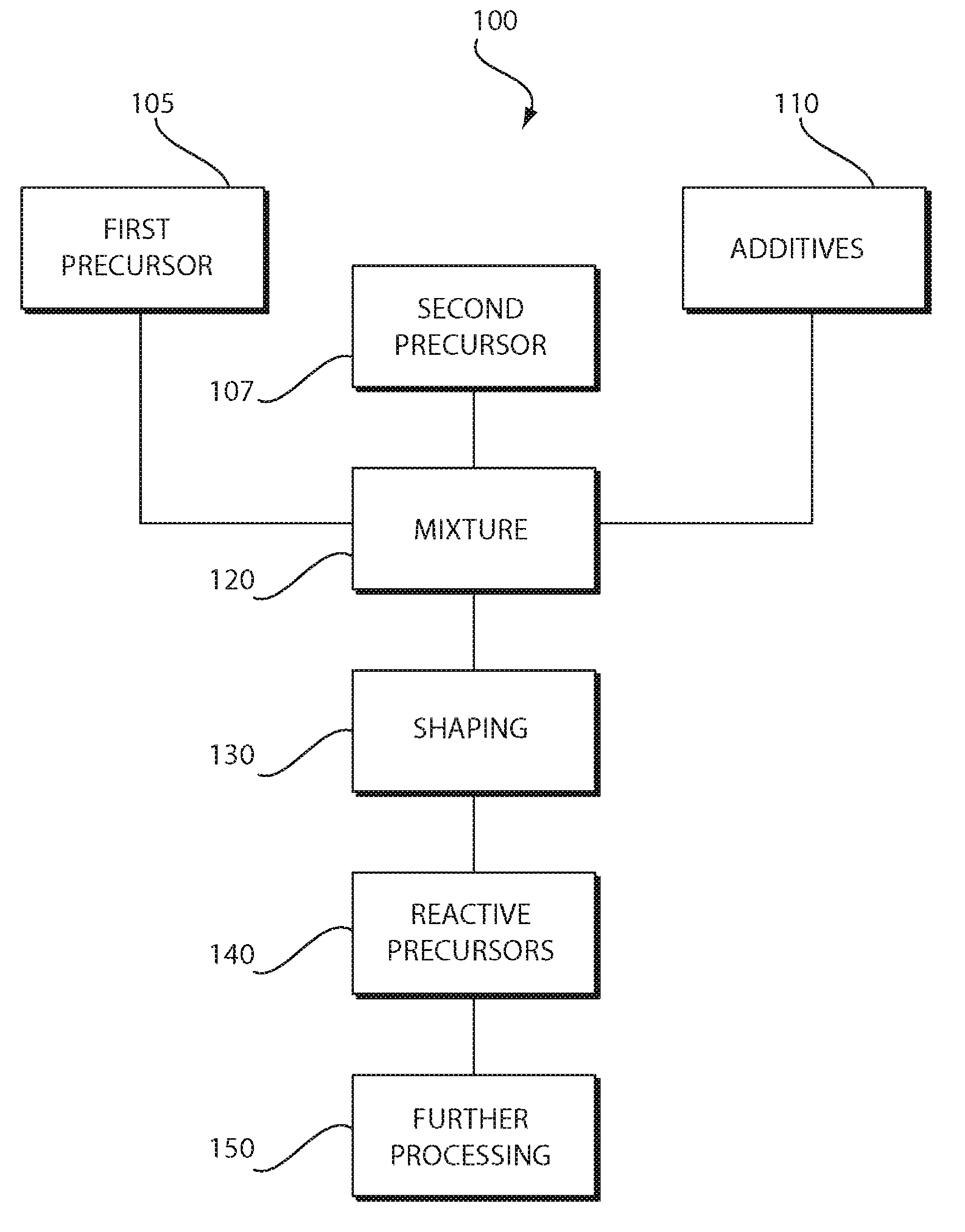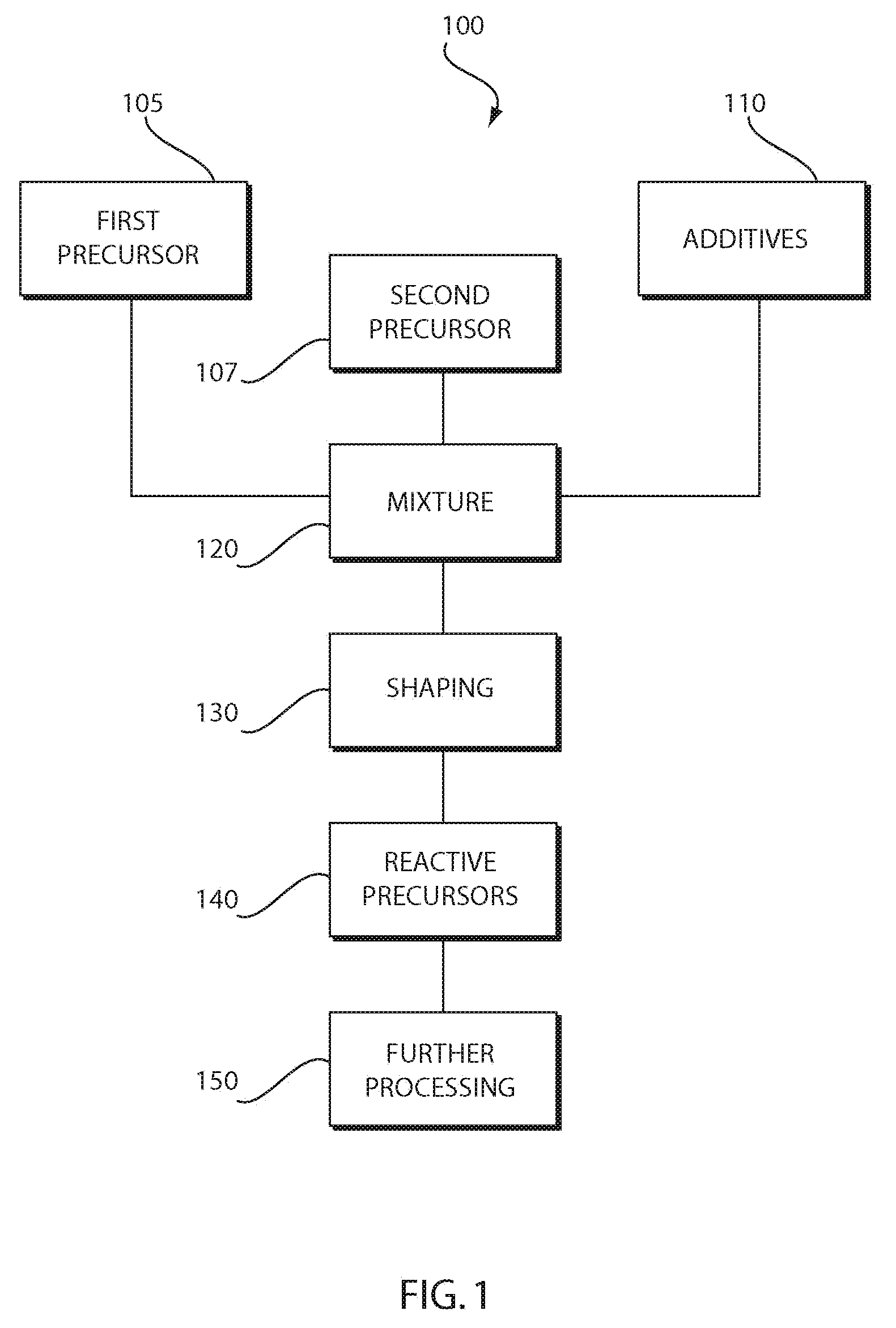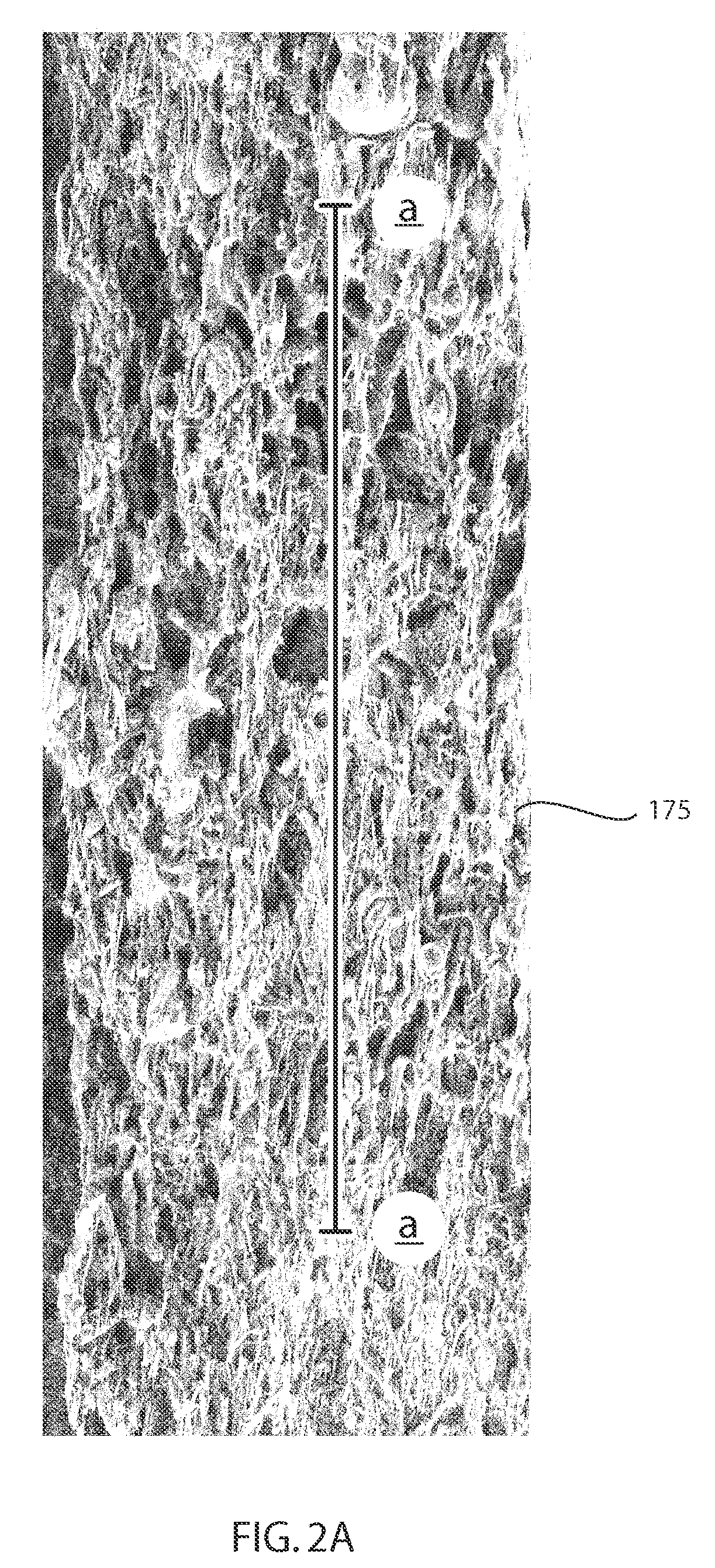Fibrous cordierite materials
a cordierite and fibrose technology, applied in the field of fibrous cordierite materials, can solve the problems of ineffective and ineffective ceramic filters, inefficient and ineffective applications of today, and ceramic materials are not immune to thermal stresses, and achieve the effects of reducing the coefficient of thermal expansion (cte), reducing the cost of production, and improving the efficiency of production
- Summary
- Abstract
- Description
- Claims
- Application Information
AI Technical Summary
Benefits of technology
Problems solved by technology
Method used
Image
Examples
examples
[0066]The following examples are provided to further illustrate and to facilitate the understanding of the disclosure. These specific examples are intended to be illustrative of the disclosure and are not intended to be limiting.
[0067]Examples of composition ratios of cordierite precursor materials, composition ratios of SiO2, Al2O3, MgO, and impurities in the precursor materials, and final composition ratios of SiO2, Al2O3, and MgO in the precursor materials. Silica is from colloidal silica and MgO is from MgCO3. Here, Isofrax, aluminosilicate, and mullite are fibers, and silica, talc, and MgO are powders or colloids. ISOFRAX is a biosoluble magnesia aluminosilicate fiber available from UNIFRAX, Niagara Falls, N.Y. Aluminosilicate fiber is an amorphous 50 / 50 alumina / silica refractory ceramic fiber, such as FIBERFRAX HS-95C available from Unifrax, Niagara Falls, N.Y., or CERAFIBER from Thermal Ceramics, Augusta Ga., or any similar melt-spun or melt-blown aluminosilicate fiber. Mulli...
PUM
| Property | Measurement | Unit |
|---|---|---|
| temperature | aaaaa | aaaaa |
| temperature | aaaaa | aaaaa |
| porosity | aaaaa | aaaaa |
Abstract
Description
Claims
Application Information
 Login to View More
Login to View More - R&D
- Intellectual Property
- Life Sciences
- Materials
- Tech Scout
- Unparalleled Data Quality
- Higher Quality Content
- 60% Fewer Hallucinations
Browse by: Latest US Patents, China's latest patents, Technical Efficacy Thesaurus, Application Domain, Technology Topic, Popular Technical Reports.
© 2025 PatSnap. All rights reserved.Legal|Privacy policy|Modern Slavery Act Transparency Statement|Sitemap|About US| Contact US: help@patsnap.com



